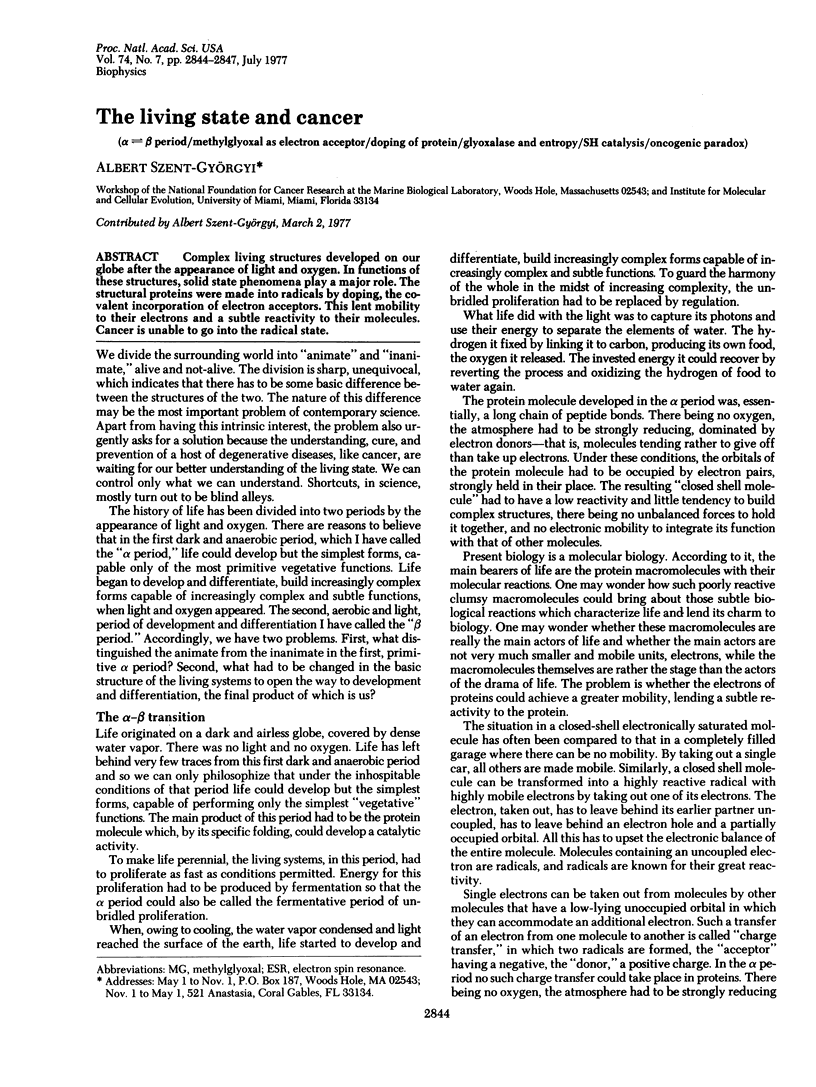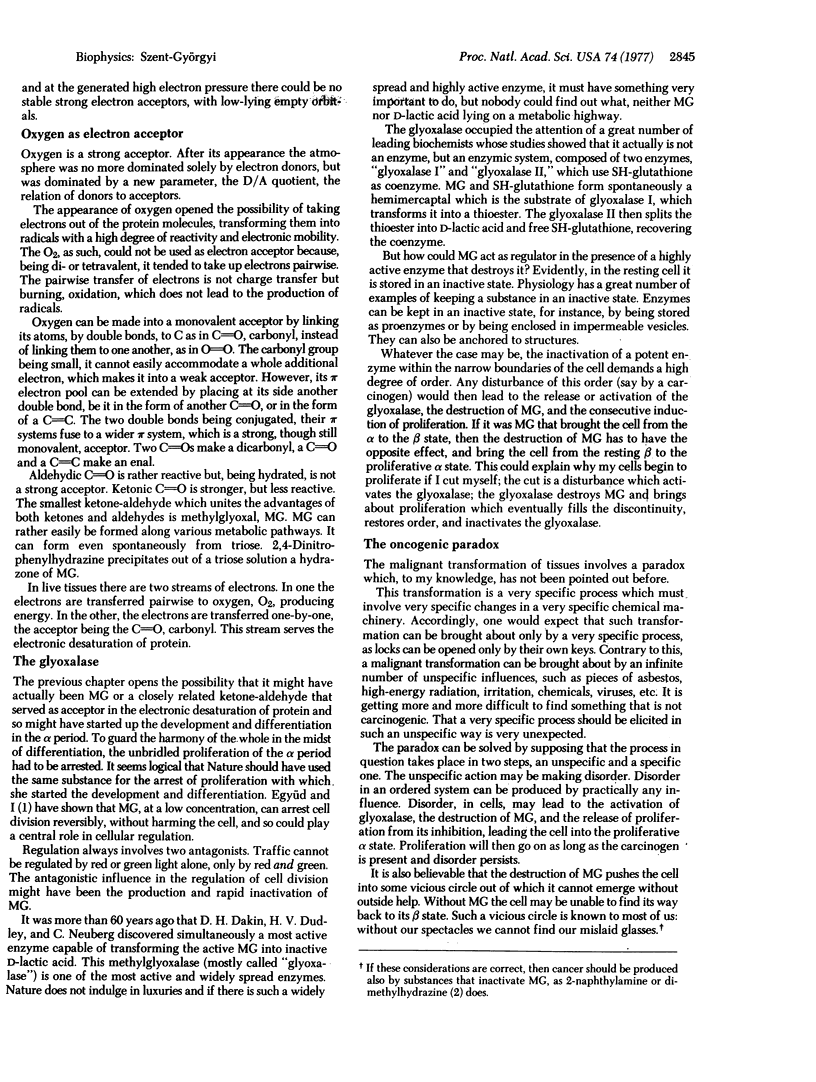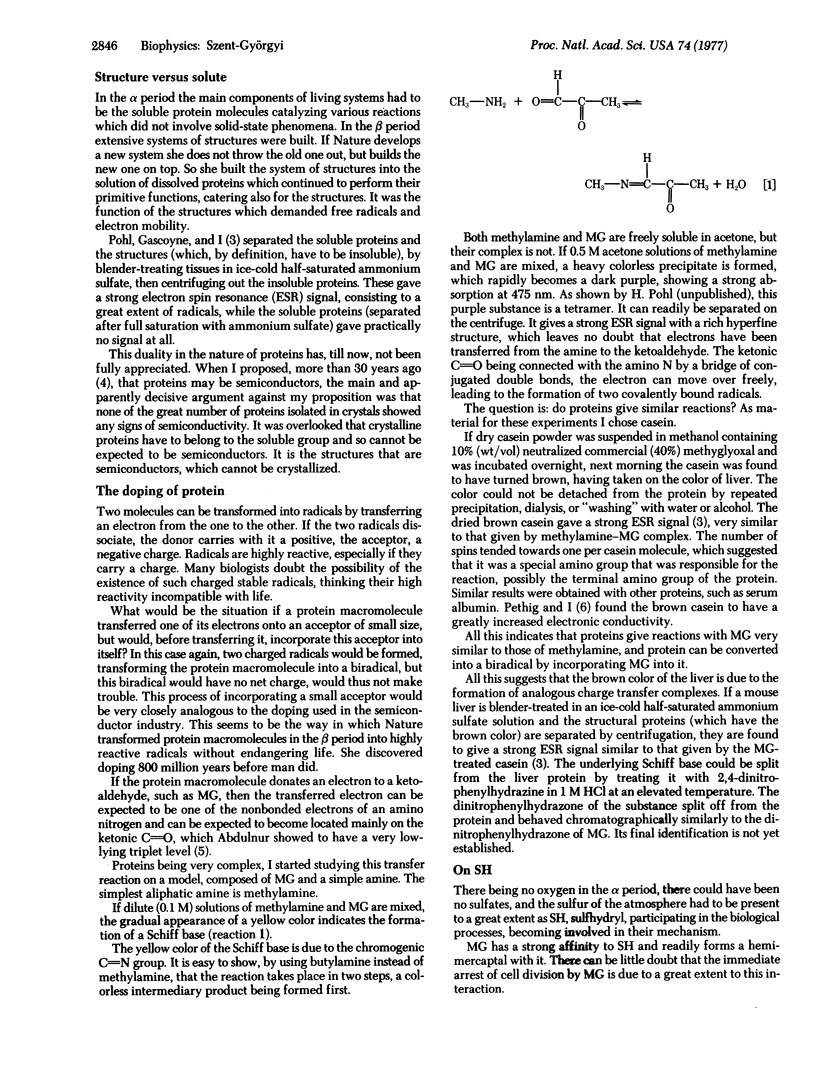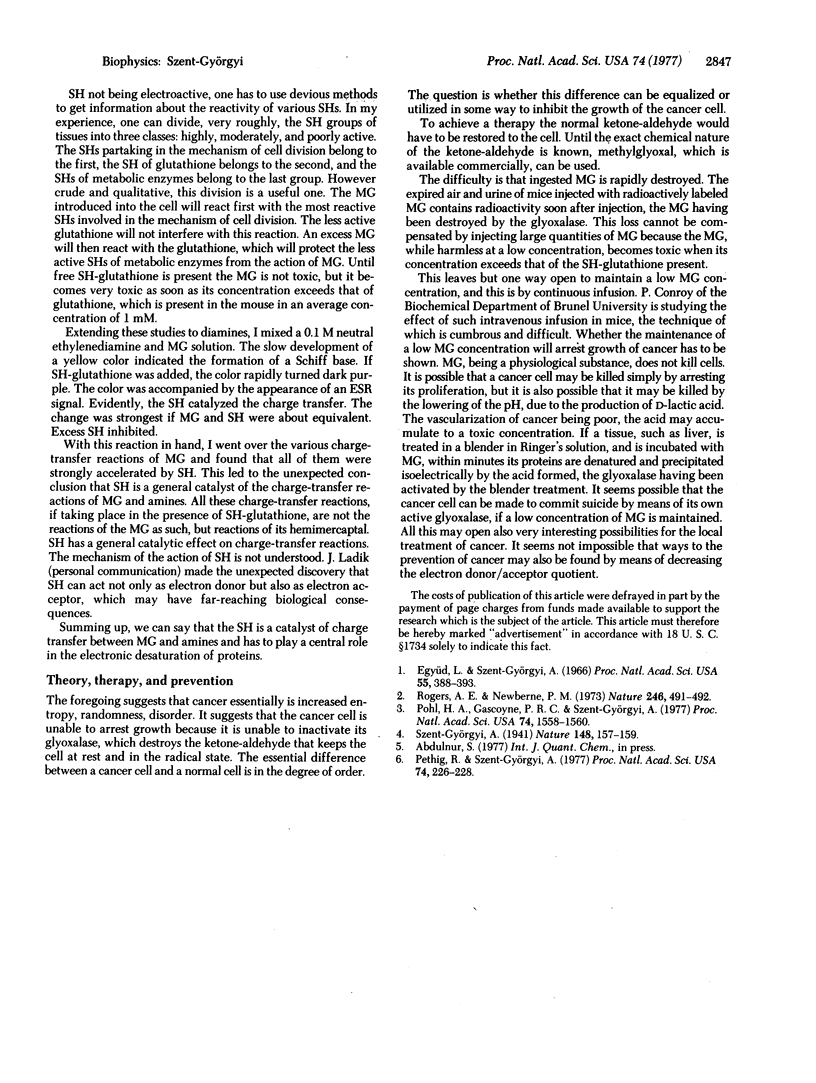Abstract
Complex living structures developed on our globe after the appearance of light and oxygen. In functions of these structures, solid state phenomena play a major role. The structural proteins were made into radicals by doping, the covalent incorporation of electron acceptors. This lent mobility to their electrons and a subtle reactivity to their molecules. Cancer is unable to go into the radical state.
Full text
PDF



Selected References
These references are in PubMed. This may not be the complete list of references from this article.
- Együd L. G., Szent-Györgyi A. Cell division, SH, ketoaldehydes, and cancer. Proc Natl Acad Sci U S A. 1966 Feb;55(2):388–393. doi: 10.1073/pnas.55.2.388. [DOI] [PMC free article] [PubMed] [Google Scholar]
- Pethig R., Szent-Györgyi A. Electronic properties of the casein-methylglyoxal complex. Proc Natl Acad Sci U S A. 1977 Jan;74(1):226–228. doi: 10.1073/pnas.74.1.226. [DOI] [PMC free article] [PubMed] [Google Scholar]
- Pohl H. A., Gascoyne P. R., Szent-Györgyi A. Electron spin resonance absorption of tissue constituents. Proc Natl Acad Sci U S A. 1977 Apr;74(4):1558–1560. doi: 10.1073/pnas.74.4.1558. [DOI] [PMC free article] [PubMed] [Google Scholar]
- Rogers A. E., Newberne P. M. Dietary enhancement of intestinal carcinogenesis by dimethylhydrazine in rats. Nature. 1973 Dec 21;246(5434):491–492. doi: 10.1038/246491a0. [DOI] [PubMed] [Google Scholar]


